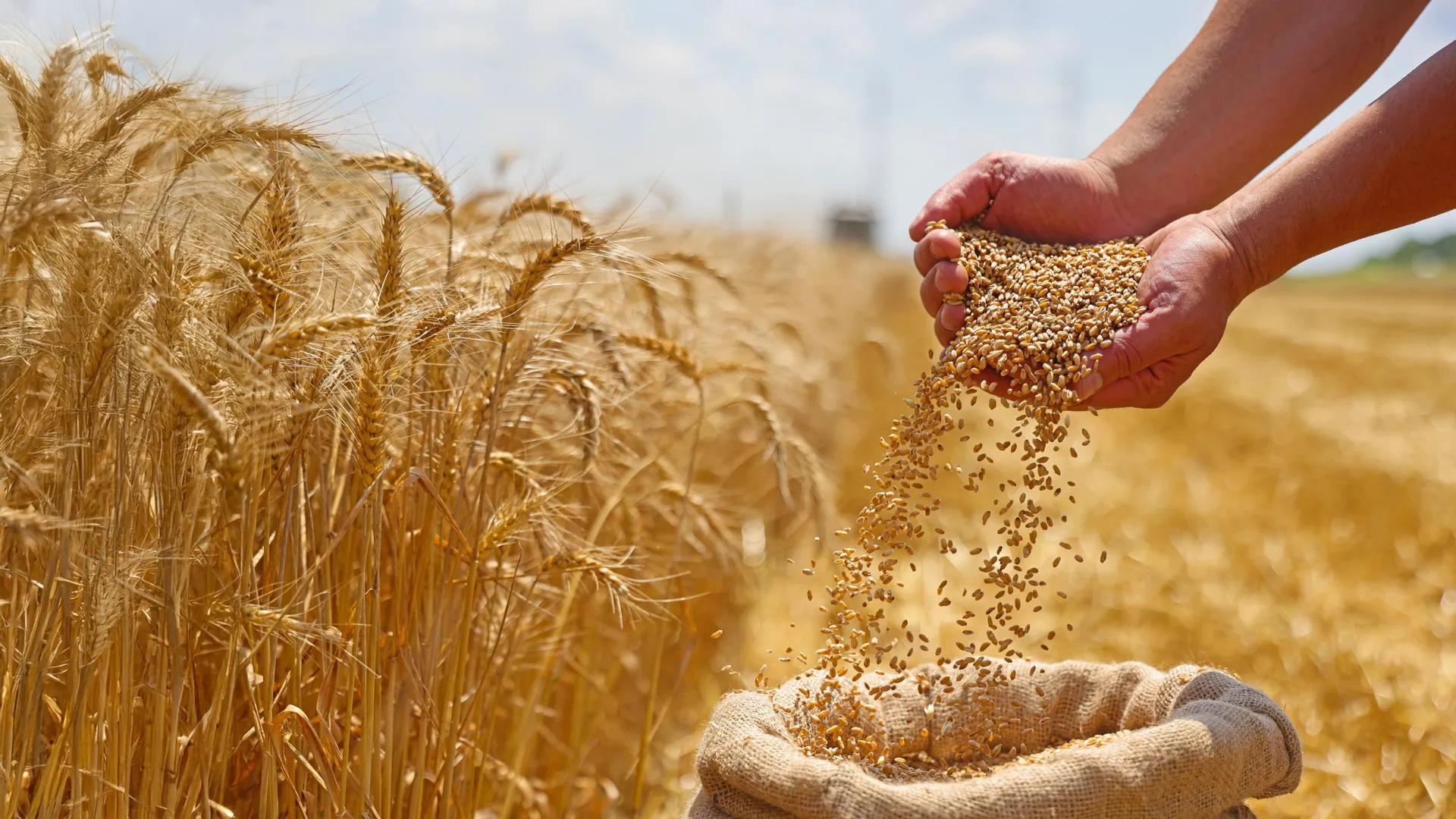A hidden gene could triple wheat yields
A hidden wheat gene may hold the key to growing far more food from the same fields.
- Date:
- October 19, 2025
- Source:
- University of Maryland
- Summary:
- Researchers discovered the gene that gives a rare wheat variety its unusual “triple-grain” trait. When switched on, the gene helps wheat flowers produce extra grain-bearing parts. The finding could allow scientists to grow new, high-yield crops to meet global food demand. It’s a simple genetic change with world-changing potential.
- Share:

Researchers at the University of Maryland have identified the gene responsible for a rare type of wheat that forms three ovaries in each flower instead of just one. Because each ovary can grow into a grain, this finding could help boost the amount of wheat produced per acre. The study appeared on October 14, 2025, in the Proceedings of the National Academy of Sciences.
The unusual trait was first seen in a naturally occurring mutant of common bread wheat, but scientists did not know which genetic change caused it. To find out, the Maryland team created a detailed genetic map of the multi-ovary wheat and compared it with that of ordinary wheat. They found that a usually inactive gene called WUSCHEL-D1 (WUS-D1) had become active in the mutant plants. When WUS-D1 is turned on early in the formation of wheat flowers, it enlarges the developing floral tissue, allowing extra female structures such as pistils or ovaries to form.
If plant breeders can learn to trigger or replicate this activation of WUS-D1, it may be possible to create new wheat varieties that produce more kernels per plant. Even small increases in kernel number can make a major difference in overall food production around the world.
"Pinpointing the genetic basis of this trait offers a path for breeders to incorporate it into new wheat varieties, potentially increasing the number of grains per spike and overall yield," said Vijay Tiwari, Associate Professor of Plant Sciences and co-author of the study. "By employing a gene editing toolkit, we can now focus on further improving this trait for enhancing wheat yield. This discovery provides an exciting route to develop cost-effective hybrid wheat."
That's important because wheat is one of the world's staple crops, feeding billions of people every day. As global demand for wheat continues to rise, climate change, limited farmland, and population growth make it increasingly difficult to increase production using traditional methods. This discovery could give breeders a powerful new tool to boost yields without needing more land, water, or fertilizer.
The discovery of WUS-D1 could also lead to the development of similar multi-ovary varieties of other grain crops.
In addition to Dr. Tiwari, other authors of this paper from the University of Maryland Department of Plant Sciences include lead author and faculty assistant Adam Schoen, Professor Yiping Qi, Professor Emeritus Angus Murphy, Associate Professor Nidhi Rawat, Assistant Professor Daniel Rodriguez-Leal, Assistant Research Scientist Weifeng Luo, PhD student Anmol Kajla, Post Doctoral Associate Parva Kumar Sharma, and Alex Mahlandt (a former MS student from Tiwari lab).
The paper "WUSCHEL-D1 upregulation enhances grain number by inducing formation of multi-ovary producing florets in wheat," was published in Proceedings of the National Academy of Sciences on October 14, 2025
This work was supported by the U.S. Department of Agriculture's National Institute of Food and Agriculture (Awards 13716674 and 13368004), the Australian Research Council (FT210100810), the Royal Society (UF150081), and the Yitpi Foundation. The views expressed in this story do not necessarily reflect the views of these organizations.
Story Source:
Materials provided by University of Maryland. Note: Content may be edited for style and length.
Journal Reference:
- Adam Schoen, Guilherme V. Yoshikawa, Parva Kumar Sharma, Alex Mahlandt, Yi Chen, Huajin Sheng, Leon Kochian, Peng Gao, Daoquan Xiang, Teagen D. Quilichini, Prakash Venglat, Sheng Wang, Inderjit Singh Yadav, Robert Sablowski, Yuqi Wang, Peng Zhang, Annabel Whibley, Amy Hill, Yong Gu, Daniel Rodriguez-Leal, Weifeng Luo, Yiping Qi, Nathan Meier, Anmol Kajla, Matthew Willman, Gina Brown-Guedira, Sheron A Simpson, Ramey C. Youngblood, Amanda Hulse-Kemp, Angus Murphy, Bikram Gill, Cristobal Uauy, Raju Datla, Nidhi Rawat, Scott A. Boden, Vijay Tiwari. WUSCHEL-D1 upregulation enhances grain number by inducing formation of multiovary-producing florets in wheat. Proceedings of the National Academy of Sciences, 2025; 122 (42) DOI: 10.1073/pnas.2510889122
Cite This Page: